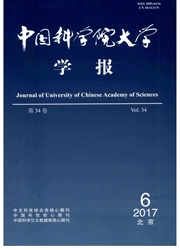

 中文摘要:
中文摘要:
改革开放以后制造业部门持续向沿海地区集中,扩大了中国的区域差异.从NEG视角,提出以下理论假设:市场潜力的区域差异是改革开放时期促使区域之间的不均衡经济增长、尤其是制造业不均衡增长的重要因素.选择了1978~2006年的panel数据以验证理论假设.分析结果表明,市场潜力和制造业总产出具有协整关系.市场通达性在解释制造业空间不均衡时是统计显著的.因此,市场通达性能够促进制造业部门增长的空间不均衡.
 英文摘要:
英文摘要:
Regional disparity between coastal regions and inland areas expanded tremendously in China during the reform period. Manufacturing sectors continuously concentrated in the coastal regions which aggravated regional inequality. This paper focuses on the role of market accessibility from a NEG perspective and raises a theoretical hypothesis: regional differentiation of market potential is one of the important driving forces which induce unequal economic growth especially unequal manufacturing growth across regions in China during the reform period. A panel dataset from 1978 to 2006 was used to test this hypothesis. Market potential and industrial output are co-integrated. They have temporal concomitance since 1978. Panel model results indicate that market accessibility is statistically significant in explaining spatial inequality of manufacture. Therefore, market accessibility plays a positive role in stimulating growth of manufacturing sectors and its spatial inequality. In China, spatial differentiation in market potential is one of the vital reasons for regional inequality during the reform period.
 同期刊论文项目
同期刊论文项目
 同项目期刊论文
同项目期刊论文
 Modeling technology adoptions for sustainable development under increasing returns, uncertainty, and
Modeling technology adoptions for sustainable development under increasing returns, uncertainty, and A Rough Set-based Multiple Criteria Linear Programming Approach for Improving Classification Perform
A Rough Set-based Multiple Criteria Linear Programming Approach for Improving Classification Perform Prediction the distance range between antibody interface residues and antigen surface using Multiple
Prediction the distance range between antibody interface residues and antigen surface using Multiple 期刊信息
期刊信息
